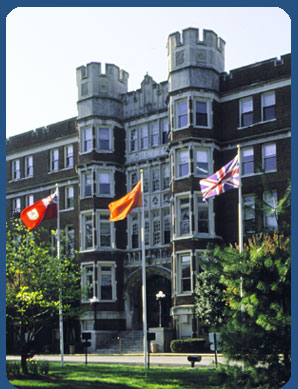| Women's Intellectual Contributions to the Study of Mind and Society Students, as part of an advanced seminar, examined and wrote about the lives of these women,
their intellectual contributions, and the unique impact and special problems that being female had
on their careers. |  |
| For information about referencing this paper - Click Here |
Myrtle Byram McGraw (1899-1988)
by Jenn Bumb
"Myrtle had a physical and mental vigor with personal tenaciousness
and, most of all, her dedication to the truth-seeking process.
Preservation of avenues for expressing truths and personal opinion and
the rights to self-correct were among Myrtle's passions. She was an
early libertarian, an early feminist, and always a friend of the young."
--Gerard Piel
Myrtle Byram McGraw was born on August 1, 1899 in Birmingham,
Alabama. She left public school at age twelve to be a typist. She
eventually attended a small seminary, now Snead Junior College in Boaz,
Alabama. She then transferred to Ohio Wesleyan University where she got
her AB degree in 1923. While in high school, her reading inspired her
to write John Dewey. A few years later she was attending Columbia
University and typing his manuscripts. She began studying infants, came
to know John B. Watson, held a Laura Spelman Rockefeller Fellowship in
Child Development in 1927, was a research assistant in the Institute for
Child Development in 1928-1929, and was a Psychology Intern at the
Institute for Child Guidance in 1929. McGraw received her master's and
doctoral degrees in 1925 and 1931, respectively, at Columbia University
Teachers College. From 1930-1942 she was associate director of the
Normal Child Development Study at Babies Hospital, Columbia Presbyterian
Medical Center. Meanwhile, she published GROWTH: A Study of Jimmy and
Johnny in 1935.
In 1937, McGraw's career as an academic child psychologist was
interrupted for motherhood after she married Rudolph Mallina, a
scientist-engineer. However, motherhood did not stop her entirely from
continuing reading and researching in her field. During her "mother
period" she was an occasional teacher at New York University and Adelphi
University. In 1939, McGraw published her most important work The
Neuromuscular Maturation of the Human Infant. Within this book she
described the three-phases, which were all documented on film, of early
childhood development as it pertained to psychomotor abilities. Most
clearly seen on these films are of babies in the water. She called this
"swimming reflexively." Through her research she laid the foundation
for many things about early childhood development. Mainly, our respect
for babies capabilities, including their remarkable psychomotor
performances and capacities for fending off threats to their well-being
and the 'neurally meditated self-regulatory behaviors of human
infants.' In 1953 McGraw returned to formally teaching as a Professor
of Psychology at Briarcliff College until her retirement in 1972.
Among all of her achievements she is known for her personal traits
that made her different from the rest. Among these, her persistence on
scientific integrity, the relationships she cultivated with her research
subjects and her compassion and caring for young children in general.
She was also influential in the development of water-birthing and the
benefits of allowing babies to swim at a very early age to develop
better psychomotor skills. On September 8, 1988 McGraw died at the age
of eighty-nine. During her eulogy her daughter Mitzi described her
mother as a woman on the forefront. She stated, "My mother was born in
the 19th Century, lived in the 20th Century and thought in the 21st
Century."
- Lipsett, L. P. (1990). Myrtle B. McGraw 1899-1988. American
Psychologist, 45, 977.
- McGraw, M. B. (1935). Growth: A Study of Johnny and Jimmy. New York:
Institute of Child Development.
- McGraw, M. B. (1939). The Neuromuscular Maturation of the Human Infant.
New York:
Institute of Child Development.
Back to Women's Page
